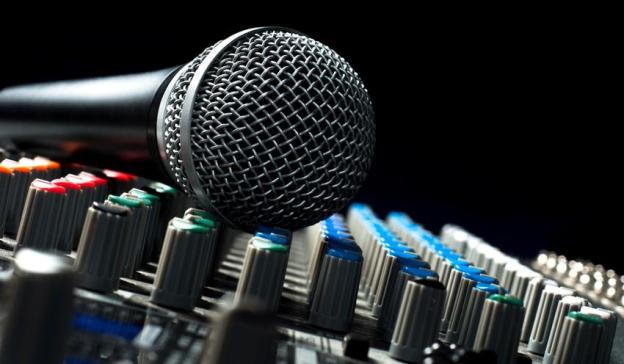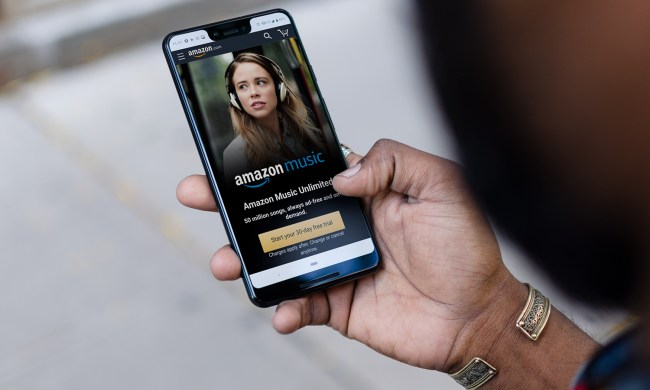
Snagging an MP3 on iTunes is easy. Making it is not. Here’s a behind-the-scenes look at what goes into making the music we take for granted.
Technology has gone a long way in making music easier to distribute than ever, but actually producing it remains an immense task. Artists, producers and recording engineers may pour hours, weeks and months into distilling just a couple minutes of flawless audio. Whether it eventually reaches you as a vinyl album you’ll pop onto a turntable, or a quarter-million ones and zeros that you’ll download in a matter of seconds, here’s how music gets made.
Recording
The first step to recording a song is obvious: Capture sounds so that you can play them back later. There are a variety of ways to do this, but most have the following pieces of equipment in common:
- a microphone to convert sound to electrical impulses
- a pre-amp to increase the strength of these signals
- recording media to store the captured sounds for later recall
Deciding whether to record digitally (as in, recording to a computer hard drive) or analog (as in recording to 2-inch tape) is a major consideration. Digital recording is relatively easy. The analog signal from the microphone must be converted to a digital signal that the computer understands, but “interfaces” to perform this conversion are becoming more common and less expensive. With a digital set-up, just hit “record” and the computer and interface do all the heavy lifting — processing the audio signal to ones and zeroes and storing them on your hard drive.
Despite this ease, many musicians prefer tape recording for its fidelity and ability to handle strong signals in a more “musical” way than digital. Tape has its own drawbacks, though.
“Obviously, the downside to tape is editing, but that’s a small price to pay for that warm, buttery sound,” says Ryan Northrop, drummer for Sons of Huns. “You can’t edit with tape without cutting it or recording over what you previously did. Unlike digital, you can’t ‘punch in’ [re-record a brief section of audio] and correct things — unless you’re a wizard or something.”
Tape is also far more expensive than recording to disk. A full-length album can use four reels of 2-inch analog tape for a total expense of more than $1,200. Further, you have to find a working tape machine and an engineer practiced in its use — both of which are increasingly rare in our digital-dominated environment.
Mixing
Modern recording typically results in multiple audio files — for vocals, guitar, drums — sometimes as many as 100 or more. This is called a multitrack recording. Your stereo isn’t capable of playing 100 different audio files at once. That’s where mixing comes in. Mixing combines the multitrack recordings into a format consumer stereos can handle.
Pat Kearns, owner of Portland’s PermaPress Studios, compares mixing to baking a cake. “First thing, you get all the ingredients out and turn on the oven — getting the session up and running, audio playing. Then you mix the dry ingredients together. This usually means getting the rhythm section (drums and bass) balanced,” he says. “Then, you start putting the wet ingredients in the mix — guitars, keys and vocals. Put it in a pan and pop it in the oven — [which you can think of as] ‘printing’ the mix, usually in stereo. Let it cool, then serve and enjoy, on your iPod or whatever else you enjoy music on.”

As with recording, the choice between analog and digital is also a consideration during mixing. If your recordings are digital, you can use software like AVID’s Pro Tools or Apple’s Logic Pro to process and combine the individual audio files and never leave your computer. However, many prefer to combine the audio signals “in the analog realm,” often using a mixing console Like Kearns’ Soundworkshop Series 34, pictured above.
For an analog mix, a signal is fed to the mixing console, either from tape or from digital files processed through a digital-to-analog interface — a piece of equipment which recreates an analog signal from a digital representation. Once the sounds are routed to the console, the mixing engineer can make fine adjustments to each before the signals are combined to form the stereo mix.
Many musicians prefer analog mixing because “outboard” equipment – physical devices that sounds better than their virtual equivalents — can be brought in to play. Perhaps more importantly, the individual recordings are combined — or “summed” — in the mixing console using actual physics instead of a computer simulation, which can never match the fidelity of real life.
Mastering
Though combining the multitrack signals results in a mix that can be reviewed on a home stereo, most albums undergo a process called mastering before they are released to the public. Mastering creates the source from which all future copies of that work will be produced.
“Mastering is the art of processing a collection of mixes into a polished, cohesive record,” says Chris Vita of Vita Mastering.
Where mixing creates songs from multitrack recordings, mastering fashions albums from songs. “The mastering process can basically be divided into two main tasks,” Vita says, “‘sweetening’ mixes with subtle and judicious amounts of signal processing (primarily equalization and compression) and arranging the tracks in their intended order complete with either silence or crossfades as transitions.” The result is an integrated product that can be delivered to the listener, where only a collection of loosely-connected media existed before.
Mastering is critically important to high-quality releases, though it can be a mysterious process. A good or bad mastering job can make or break an album — especially for those with the most discerning tastes.
Distribution
The final choice the artist makes is how to deliver their work to their fans. Luckily, there have never been more or better ways to do this.
Vinyl records remain the number one choice of audiophiles and hipsters due to their high fidelity (for the former) and coolness (for the latter). However, vinyl is also the most costly distribution method. Minimum production fees will likely exceed $600. Further, mixes must be specifically mastered to compensate for vinyl’s limitations — an expense that can easily match or exceed other production costs. Vinyl, for many the most desirable distribution medium, is unfortunately also the least-attainable. Tape cassettes are still an option for those seeking analog distribution, but even fewer potential listeners have working tape decks than have working record players — an important limitation to bands seeking to reach the widest audience.
CDs are probably the most popular choice for distributing music at shows. The same $600 that buys just 100 7-inch records can purchase 500 full-length CDs from a company like Cravedog. Shorter production runs are also available, but the per-unit price is much higher than those for larger runs. Bands on tight budgets — as many are — can always burn CDs themselves. Though CDs have decreased in prominence overall, they will continue to be an important part of the distribution ecosystem, especially for artists on a budget.
It has never been easier to distribute one’s music online. This is in large part due to Bandcamp — the best thing to happen to independent musicians since MySpace. Feed Bandcamp songs and a PayPal account and you can have an online music store up and running in minutes. Bandcamp requires no sign-up fee, but you will lose a significant portion of your income to its and PayPal’s fees. Despite this, Bandcamp is rapidly becoming the lingua-franca for online music sales.
Profit … but, likely, not
It can take colossal amounts of time, effort, and money to produce an album. The steps above don’t even include writing the music to be recorded, a process which itself can take months or even years of work.
Rewards for an artist’s toil are often scant. Very few will recoup the money spent on their recording projects, and fewer still will receive any compensation for the time invested. For most, music remains a labor of love, and an expensive one at that.
If music is something you take pleasure in, remember: making it is difficult and expensive. Those producing it deserve our support. Keep that in mind the next time your musician friend badgers you to support a Kickstarter project.
[Top image courtesy of Oliver Sved/Shutterstock]


